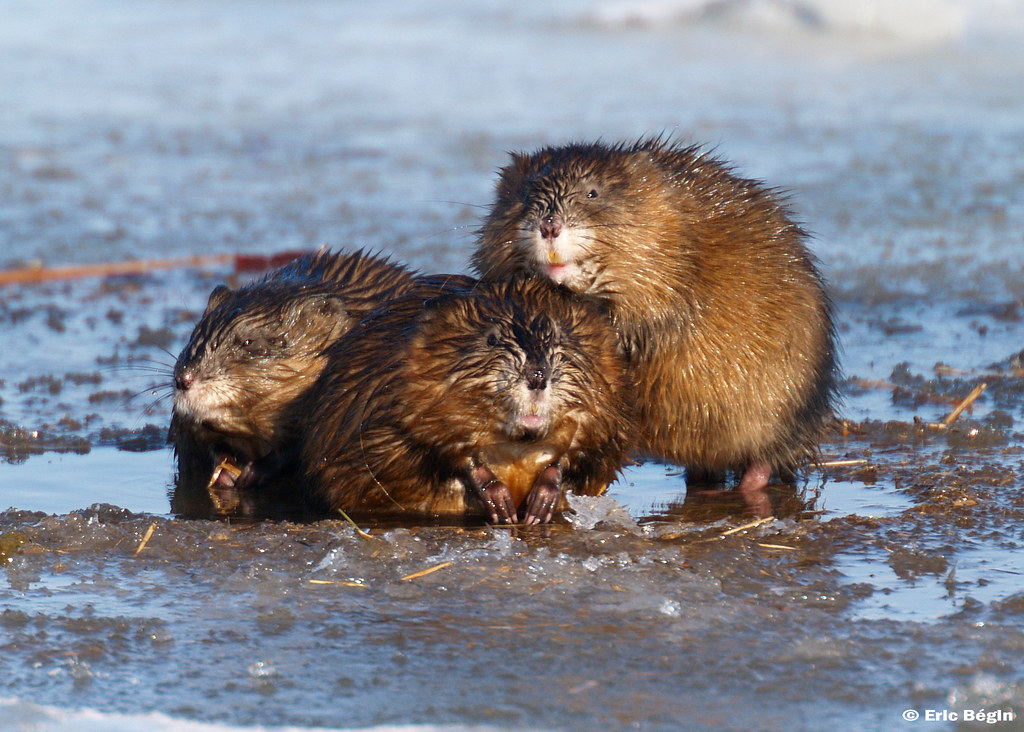The Lake Minnetonka Conservation District has received multiple inquiries and complaints about muskrats inhabiting the surrounding shores of Lake Minnetonka. Questions that have arisen from the public deal with concerns about what muskrats are, where they’re found, if they’re harmful, if they’re similar to beavers, and how they can be managed. Some answers to these questions are provided below.
What are they?
Muskrats are large semi-aquatic rodents that spend most of their time in the water. They resemble beavers but are most closely related to mice and rats. They get their name from the strong smell or “musk” scent they produce during mating season and marking territories.
Where are they found?
Muskrats are found throughout Minnesota. It is mostly commonly found in marshes, ponds, and streams, that have many water plants. Though it is famous for making domes houses of mud and vegetation, it can also often live in burrows.
Are they related to Beavers?
No. Although they share many behaviors and physical traits, beavers and muskrats are not closely related at all. One main difference is their size. Beavers are the largest rodent in North America and are considerably larger than muskrats. They can way up to 100 pounds, but usually fall between 38 and 60 pounds. They also grow to be between 39 and 47 inches long. In contrast, muskrats are much smaller. They weigh between 2 and 5 pounds and only grow to be between 16 and 25 inches long. Both have long tails, however, yet a beaver tail is a few inches longer than a muskrats’. A beaver tail measures between 10 to 13 inches while a muskrat tail measures between 7 to 12 inches.
One similarity is that they both live in lodges but it easy to tell whether which creature lives inside. Beavers build larger lodges from wooden material like sticks and logs. Whereas muskrats will build their lodges using other vegetation, like cattails. Yet in the absence of a lodge, both beavers and muskrats will burrow into the bank of a river or stream.
Are they harmful?
Yes. Muskrats can be harmful to pets because they can carry infectious diseases. Rabies, for example, is one of the diseases Muskrats can transmit to young pets that haven’t learned to keep their distance. Muskrats are aggressive and will attack pet if they are approached, but to ensure you their safety from contracting rabies, it is always good practice to get them vaccinated.
Muskrats can also attack young children. If your children like playing outside, be sure to teach them about these rodents if they live on your property. The best way to prevent your children from encountering these rodents is to build fencing or contact wildlife management specialists.
As for environmental impacts, Muskrats are known to be a nuisance species because of the damages they can cause the aquatic and terrestrial landscape. They can be serious agricultural pests through their consumptions of ornamental plants, aquatic plants, and garden produce. Their tunneling can also create hazards for lawn mowers or golf carts, and will collapse if walked on
How can you manage them?
Trapping and shooting are the most commonly used techniques to reduce muskrat damage. In Minnesota, you are allowed to take muskrats without a permit if they are causing damage to your property. Some cities do not allow the discharge of firearms. If shooting is allowed, you are required to notify the MN DNR within 24 hours of taking a muskrat. If you choose to trap a muskrat, you do have the option to relocate it or take it. If relocating, you should take it 10 to 15 miles away from where it was captured to ensure it will not return, but you must get governing agency permission before releasing the animal.
Modifying the habitat is another way to prevent muskrat damage to your property. Conducting prescribed burns to reduce marsh vegetation or depleting water storage in irrigation canals when no longer needed are ways to reduce muskrat inhabiting your property. For lakeshore property owners, consider decreasing slopes on your lawn or adding rock rip rap to your shoreline to prevent Muskrats from tunneling.
Putting up fencing or other barriers around gardens or other areas of your lawn is another great tactic to prevent muskrats from consuming your produce and plants.
Another option is to contact a professional animal control company. You may find companies who work in the Lake Minnetonka area by searching on the website.
For more information, visit the following resources to learn more about muskrats:
